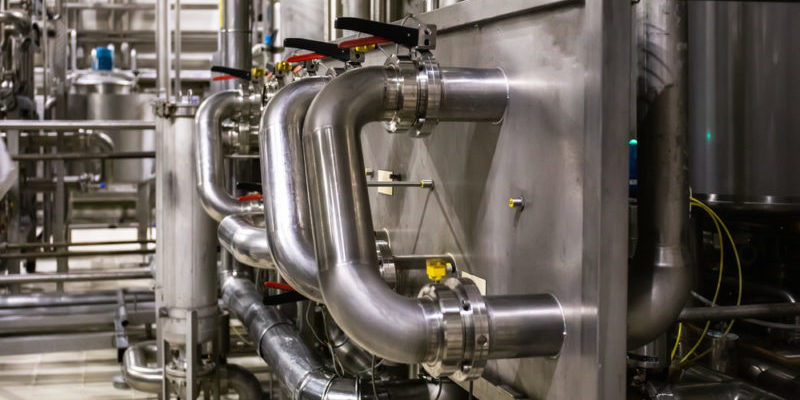If you operate a bakery that produces a range of products like slice breads, croissants, cookies, and decorated cakes, these goods have distinct microbial risk profiles that depend on the equipment and infrastructure used to make them. Such risk variances necessitate specific equipment design and special techniques for cleaning. In this article, we define hygienic design as it pertains to bakery infrastructure before discussing recent progress in both design and sanitizing methods.
Hygienic design in bakery equipment?
Hygienic design in bakery equipment implies a specific set of provisions to which the machinery must conform. The requirements should deliver the conditions to prevent physical, biological, and chemical contamination of any edibles you produce.
Hygienically designed bakery equipment must:
- Allow for easy, straightforward cleaning dry and wet cleaning methods
- Readily provide access for routine maintenance and inspections
- Display construction and installation that preserves food safety
- Product risk profiles in bakeries
Bakeries lacking hazard analysis and critical control points realized they had to improve their understanding of various food safety issues at their facilities. They started by identifying the specific risk profiles of their ingredients, processes, and end products as outlined under the Food Safety Modernization Act. This legislation prompted the food processors to examine their manufacturing facilities and practices more closely to preserve the integrity of the supply chain.
Bakery industry professionals gained a better subsequent understanding of the hazards associated with the products they produced, ultimately determining that the oven was only effective for reducing some preexisting microbial hazards, but not all. Through its expanded awareness, the industry learned that organisms like Staphylococcus aureus and Bacillus cereus survive high oven temperatures, causing illness in some consumers. Manufacturers handling products in which these organisms often flourish sought out hygienically designed equipment and enhanced sanitizing procedures to mitigate the issue.
Hygienically designed bakery equipment
Original equipment manufacturers for the baking industry have started investing more resources into machinery that reduces contamination risks and is easy to clean. Not all facilities have adopted hygienic machinery. There is a lot of equipment out there that brands itself as “hygienic” when the machines are just stainless steel versions of previous legacy models. The tools might look updated and newer, but they are still challenging to clean.
After working closely with reputable sanitors and maintenance technicians, older bakery equipment can be modified to improve hygienic safety. The main principle behind hygienic bakery equipment design is that if you can see it, you can clean it. Owning complex assemblies with several unnecessary external parts means that these pieces of equipment should be altered by a professional to make them easier to clean.
Sanitizing and cleaning your bakery equipment
While the baking industry has seen several recent advancements, it’s still lacking any uniform approach to sanitation in areas like run-time verification, environmental monitoring, and method verification. Run-time, for instance, dictates cleaning frequency and the number of production breaks. These data must be validated regularly to keep adequate records. Detailed cleaning logs help prevent toxic microorganisms from developing in certain ingredients like dough and batter that may not be eliminated by the oven.
There are other run-time validation procedures dealing with slurry pre-baked materials like egg slurry and dairy slurry to prevent bacterial growth. Yet no industry-wide standard exists for verifying things like recirculation and refrigeration intervals. Most bakeries are aware of the risks associated with egg and dairy solutions, but many still fail to mitigate them effectively. The most important details to remember are the microbial growth rate of your ingredients and ensure that any presence of slurry is cleaned from the equipment entirely before it poses a risk.
Approaches to sanitizing and cleaning equipment have become more defined in recent years, and processors, on the whole, are familiar with industry-accepted procedures for wet and dry cleaning. Other cleaning methods that utilize dry ice or dry steam can also help reduce moisture accumulation.
Increasing awareness and coordination
As with any aspect of your business, maintaining a hygienic bakery requires ongoing awareness and diligent attention to the sanitation of your manufacturing equipment and lines to prevent contamination. Business owners increasingly rely upon industrial automation solutions to guarantee that their equipment maintenance and cleaning stays on schedule.
Are you interested in automating your operations and asking yourself, “Where can I find industrial automation companies near me?” Consider partnering with EZSoft, a leading provider of automated recipe and batch management solutions in Malvern, Pennsylvania. Learn more about our leading-edge information and process control systems by dialing (484) 568-5040 now.







